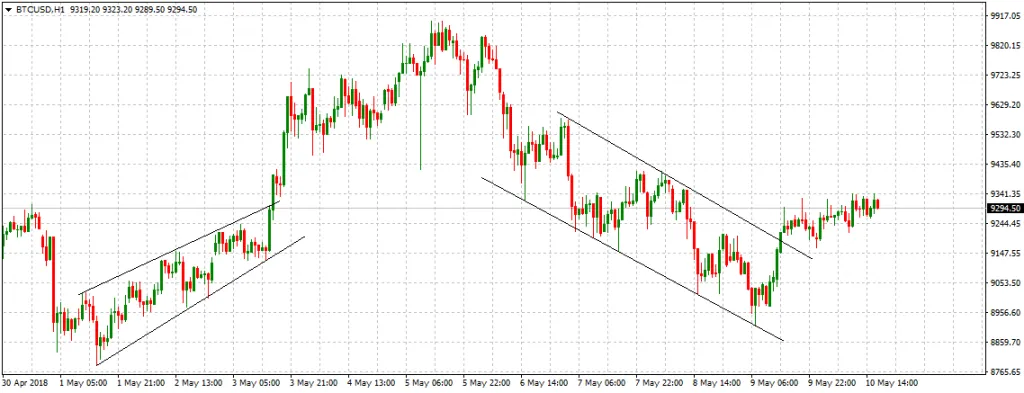Decidedly, Bitcoin does not know very well how much it is worth! He goes up, he goes down to the delight of traders ... and as there is no organized stock market, it's party! Until the day where....

"Assume you could make a lot of money trading freshly harvested baby brains. Would you do it? "He asked. "To me bitcoin is almost as bad".
Among the most violent critics against encrypted currencies, the two acolytes of Berkshire, W.Buffet and C.Munger do not mince their words!
On several occasions, in these contributions, it has been emphasized that the crypto-currency queen and most of those who claim it are absolutely artificial. Encrypted currencies, the most important of them at least, are not based on any underlying. Virtual, they have no "reality".
And yet, they are subject to furious quotes. Why, under these conditions imagine that the prices, at least those of bitcoin, the currency-queen, will collapse? Must we understand that his detractors are in the most absolute denial? They would be part of all those myopic who did not understand the Internet revolution in its infancy and who continue to dispute the consistency while with encrypted currencies it takes all its societal and even philosophical dimension?
The purpose of this column is to understand how one can continue to think that its courses will collapse when everything shows the opposite.
Lessons ? Which classes ?
When we follow the "courses" of bitcoin and the comments that accompany its ups and downs, we feel the strange feeling of attending a sports competition. This is often the case in trading comments. This is even more the case that we are dealing with quotations "over the counter". The quotations of the encrypted currencies have nothing to do with the quotations of the so-called public companies in the Anglo-Saxon universes or the companies listed on the official European stock exchanges. These are "over-the-counter" quotations without constraint, transparency, liquidity or rules on supply and demand concentrations.
The charts spread with their inevitable candles, macd and various bars give the false feeling that the quotations of these values are in line with a listing of the shares of Boeing, L'Oreal or IG Farben. The latter are almost 100 years old but the leaps, furies and depressions of bitcoin are commented as if it had existed at all times.
It is better to return from what is only an illusion: Bitcoin prices are very largely "manufactured" by a handful of stakeholders who, increasingly, concentrate existing assets. It has long been said to be a new version of a Ponzi scheme. It must be kept in mind that prices reflect the factual collusion between the "early adopters" who are at the head of considerable potential gains and the "mass adopters" who can move the markets in the direction that interest them.
Volatility, liquidity
The bitcoin prices observed according to the different sources, graphs and other drawings, show that the market is a market of traders. Early adopters are put on the side of the road, they are only useful because, fringe, they freeze some of the assets and wait for the big night when the bitcoin "will make 500,000". In doing so, they suggest that there would be an underlying. Mass adopters are investment funds or hedge funds whose objective is not to wait until one day you can hit the jackpot but to make money right away, as much as possible and As fast as possible.
Traders do not make money looking at the distant future. They do not win either if the yield curve is flat. It's the opposite. One only really earns money in trading operations if prices fluctuate. The more they do it, the higher the earnings. Quit to give a hand to the classes. This explains why traders flourish in unregulated markets. Precisely because transparency does not exist and because there are no rules on the risks of concentration and domination.
The only constraint is that of liquidity: the sooner you unbundle and the better it is managed, even if the operations are carried out in the smallest possible time and price spreads (see High speed trading).
It will be objected that investors have funds: hedge funds because they have lines of credit with banks and investment funds because they have attracted capital in search of high returns.
It is precisely here that the reversals will find their sources: to be able to mount so-called "future" products, whatever the types, the operators had to store bitcoins. There was, besides the shepherd character of the second-hand investor, the main reason for the rise in bitcoin prices. When investors finished shopping, prices stagnated and collapsed.
It does not matter, ultimately, the bitcoin advocates reason: the chances of profit are so great that it is worth the effort.
Interest rates like "Fairs"
However, there remain two considerations that we did not want to see the impact on the existence and therefore the listing of encrypted currencies. On the one hand, the abundance of money. To counter the risk of a recession, US and European central banks have flooded the markets for 10 years. It was to promote the distribution of credit and by it to support businesses and push them to invest. The second consideration was related to interest rates: in a period of supply of money overflowing with low demand, rates fall. Rates have reached incredibly low levels over the last decade.
The result was start-up folly and, especially in the United States, the emergence of all possible forms of assets whose gradation of risk ranged from "absolute risk" to "very high risk". , from virtual currencies to ICOs.
However, the "monetary world" is about to return to these two elements: the rise in US rates is an objective of the FED. In bank terms, this means, at best, that the bank will maintain its outstandings at the same level by re-injecting the proceeds into the market, or it will let its loan portfolio deflate. The more expensive money will follow the rarer money.
This means that the cost of trading, that of "future" operations and the refinancing of hedge funds will follow the scarcity of money. The latter will force investors to modify their risk grids. We will then move from a gradation: "high risk to moderate risk", where the "virtualities" will no longer have their place.
It is precisely at this time that the prices of virtual currencies will collapse: they had no underlying and they were the product of the superficial conjunction of exceptional macro-monetary phenomena leading to give the illusion a sense of risk taking the most insane.
The first to leave are the professionals because of the new gradations of their risk grids and to avoid getting entangled in lines of credit increasingly expensive. Those who will stay until the end are the "early adopters" at zero cost and the "mystics".
Those led by their gurus denounce the conduct of the "big" and call for help from the States!
